Fig trees are cultivated due to their lush foliage which creates a welcoming contribution to most yards and gardens. You might be wondering why they shed leaves at different times of the year. We have researched the question, and here is what we’ve found.
Fig trees naturally lose their leaves during the fall in response to the changing season before going dormant in the winter. When they shed foliage spontaneously, environmental changes could be responsible for the condition.
Fig trees are naturally sensitive to environmental changes, and they react by shedding their leaves. Since there is a seasonal reason for this, unexpected leaf fall could also be caused by other factors.
Why Do Fig Trees Lose Their Leaves?
Fig trees lose their leaves as part of their natural growth cycle and exhibit this trait to adapt and survive certain environmental changes and conditions.
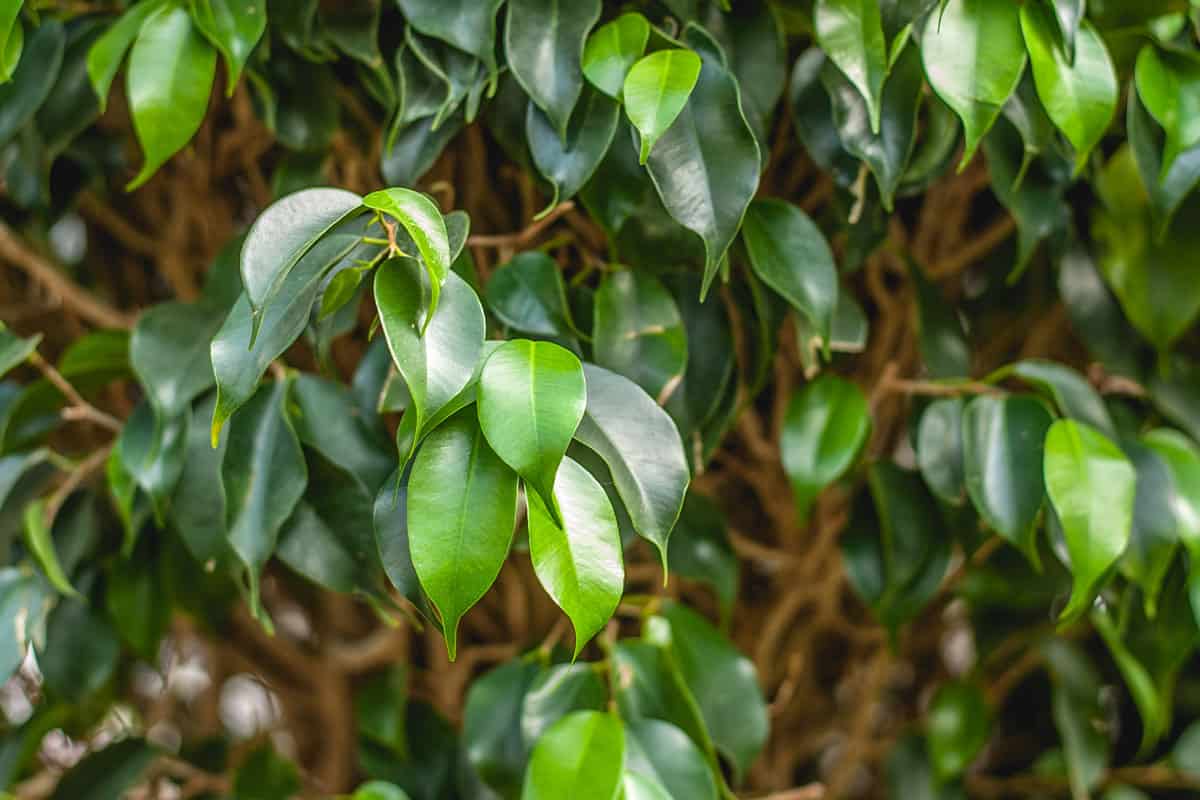
Leaf Shedding: A Natural Cycle?
Figs, like most deciduous trees, undergo changes throughout the seasons to adapt and thrive in response to the environment. Hormone and chemical production may increase or decline to control and determine plant tissue activity and function.
During the summer, fig trees generate and store energy through photosynthesis. It is the process by which simple sugars are produced to feed and sustain growth and development. Chemical activity is at its peak as the development and growth process is most active during this season.
As fall approaches, cooler temperatures signal the tree to slow down metabolism and reduce the production of certain hormones. Auxin, a chemical that binds leaves to branches, is depleted, and the bond is weakened, so the foliage sheds.
Basically, fig trees lose leaves as a survival mechanism to endure the winter. The foliage is shed to conserve nutrients stored in the root system enough to sustain the tree during the season.
What Causes Figs To Lose Their Leaves Before Autumn?
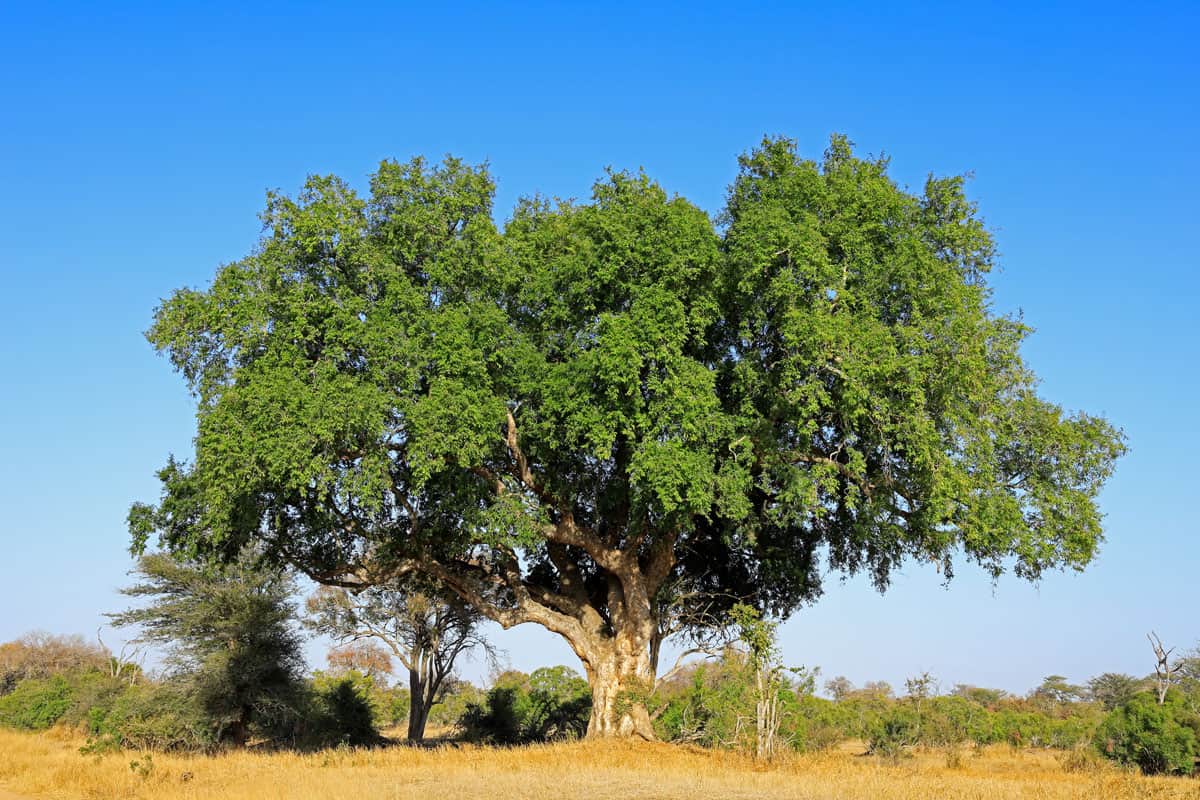
Fig trees tend to lose their leaves as an adaptive response when exposed to environmental changes.
Can Fig Trees Be In Direct Sunlight?
Figs require at least six hours of bright indirect sunlight exposure to grow and thrive. Lack of light affects photosynthesis since the tree receives less energy to facilitate the process and to transform light into carbohydrates and other nutrients necessary for their development.
As a stress response, the tree sheds its leaves because it cannot sustain the rest of its foliage without enough nutrients. It needs to adapt to the environment.
In most instances, relocating the tree to an area with better light exposure will also stress the plant because it needs to acclimate itself to changes in temperature and humidity.
Do Fig Trees Like Humidity?
Native throughout the tropical regions, figs grow best in humid environments. If humidity is low, the air is too dry, and winter conditions are simulated. The tree sheds its foliage because it presumes it is already the beginning of the cold season.
Humidity should always be kept at an optimal level since too much moisture will also damage the tree. They will be more prone to fungal infections and diseases.
What Temperature Can A Fig Tree Tolerate?
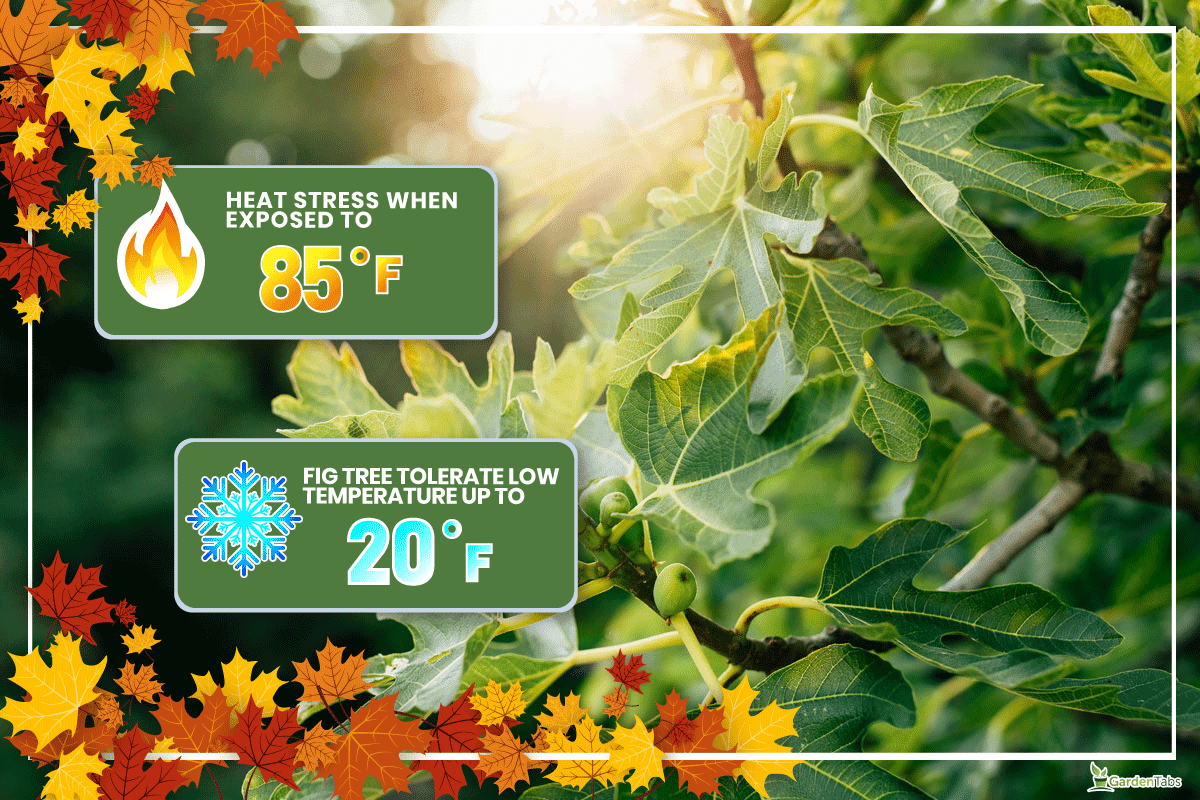
Figs cannot tolerate extreme temperatures. If the tree is exposed to frigid conditions and too much heat, leaves will shed, and fruits and flowers will be damaged.
Figs are susceptible to heat stress when exposed to temperatures above 85 degrees Fahrenheit. Apart from shedding, the foliage will curl and turn brown, and the tree eventually stops growing.
Applying a layer of mulch and compost helps retain soil moisture. Containerized trees should be kept indoors or placed in a shaded environment.
Although figs are native to the tropics, mature, established, and cold-hardy varieties can tolerate low temperatures of up to 20 degrees Fahrenheit. The tree's capacity to withstand winter conditions depends greatly on the specific cultivar.
Relocated Fig Trees

Figs are sensitive and easily stressed when transferred to a new location because they need to adapt to the new environment. Do not relocate your tree even if you found a spot with better humidity and lighting unless necessary.
Under or Over Watered
The tree is particular of its hydration requirements. If the soil is left too dry, the foliage will turn brown and fall. On the other hand, overwatered figs have drooping and saggy yet green leaves that eventually drop.
Fig trees should be hydrated only when the top layer of the soil is already dry. Dip your finger onto the growing medium to check the moisture content. Give the plant thorough hydration in between watering.
During summer, you may have to water your plant more often since the heat hastens evaporation. However, the tree requires less hydration in the winter months.
Compost and mulch help retain the ideal soil moisture the tree is accustomed to.
Compost is made of organic matter and nutrients that improve soil composition. Since this is the case, adding compost to the growing medium increases the soil’s capacity to hold water.
A mulch layer acts as a covering that slows down evaporation and retains moisture. In the colder months, it regulates soil temperature to keep it moist and warm and prevent the ground from freezing.
Nutrient Deficiency
If the light, water, temperature, humidity, and other requirements are met, and your fig tree still exhibits unhealthy growth, perhaps it may not be getting enough nutrients.
Amend the soil and enrich its composition by applying fertilizers with equal amounts of Nitrogen, Phosphorus, and Potassium (NPK).
If you do not want to use synthetic fertilizers, add an adequate amount of compost to the soil.
Pest Infestation & Diseases
Generally, shedding foliage does not always mean infection. However, if the nutrient supplements fall low as well as the growth requirements, they may be prone to pathogenic attacks.
The most common pests and diseases that a fig tree may be infected with are fig rust, blight, and nematodes. Applying neem oil, using home remedies, and pruning are effective ways to treat the infection.
Neem Oil
Neem oil coats the leave’s surfaces and acts as a protective layer that prevents insects such as nematodes and mealybugs from feeding on the tree’s foliage.
To create your own mixture, fill a spray bottle with warm water then add a few drops of dish soap and neem oil. Apply the solution by misting it on the infected portions.
Check out Ready To Use Harris Neem Oil on Amazon.
Home Remedies
Home remedies may equally work to prevent the spread of diseases and infestation. It will be a good way to control the spread of pathogens without exposing your trees to harmful chemicals.
A combination of sodium bicarbonate diluted in water and neem oil will provide an all-around pesticide that may be used to control the infestation.
Check out Natural Sodium Bicarbonate on Amazon.
Pruning
Allow your fig tree to proliferate and limit your pruning to the dead, damaged, and diseased branches. This will prevent the spread of diseases and infections that could harm the rest of the plant.
What Variety Of Figs Tend To Shed The Most?
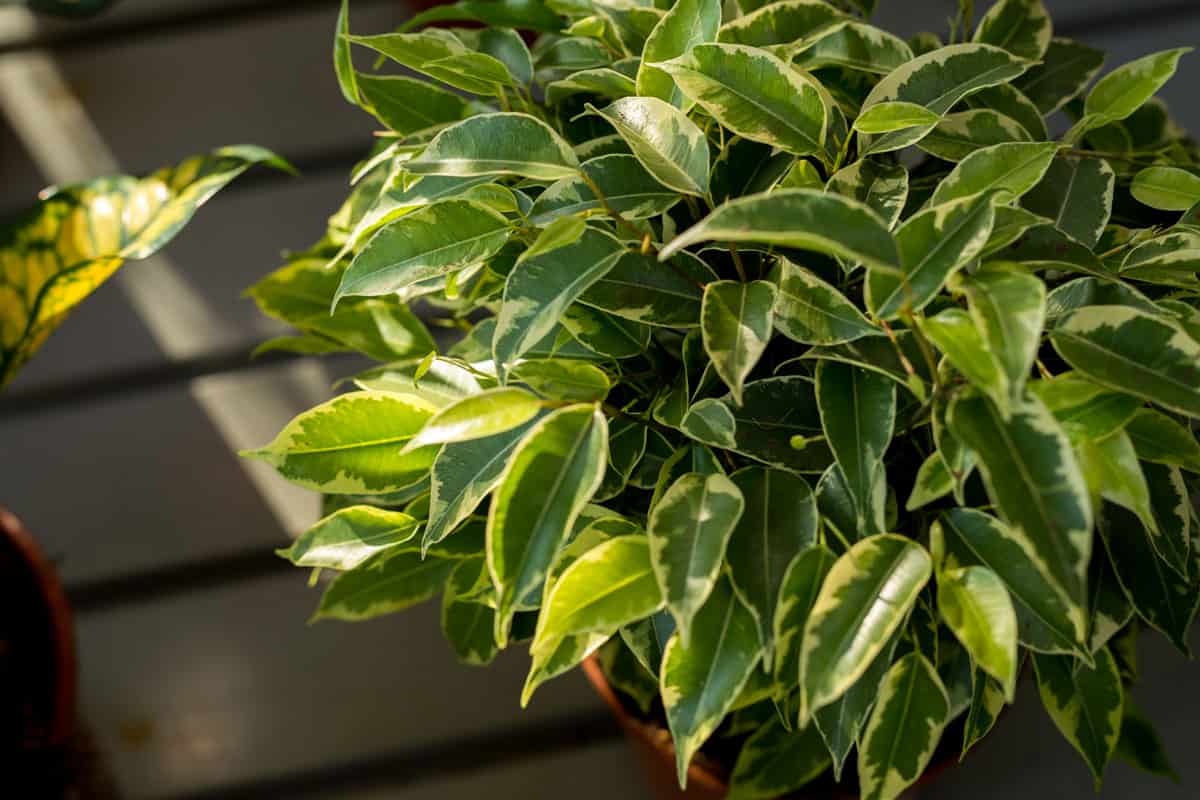
Weeping fig, or Ficus benjamina is the most sensitive variety of ficus trees known for spontaneously dropping its leaves for no apparent reason. However, a deeper understanding of its growth characteristics and environmental needs will shed enough justification.
The variety is more sensitive to environmental changes that occur within their immediate surrounding. Simply moving the tree to a different location results in the plant shedding its leaves more dramatically.
How Do You Protect A Fig Tree In The Winter?
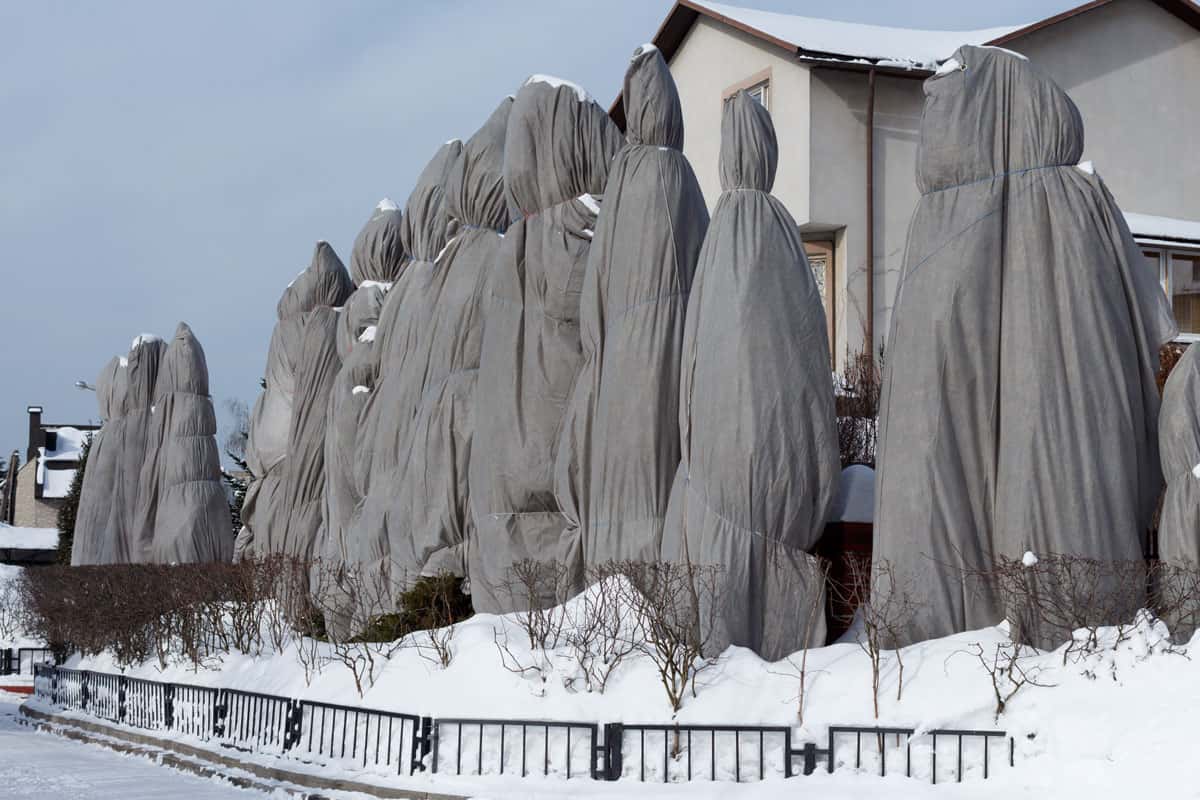
During winter, in-ground figs should be covered with fabric or row covers to protect the tree from freezing temperatures.
Note that plastics prevent evaporation and proper air circulation if used as a garden cover. Moisture is trapped inside the insulation. If this occurs, the tree could be infected with powdery mildew and fungal diseases.
It is best to place straws inside the insulation. Straws are not densely packed and feature air pockets within the structure that considerably improves airflow.
Mulch the tree’s base to protect it from ground frost and cut its branches before using a garden fabric. For potted figs, simply put them indoors and surround them with other growths to keep the area humid.
Check out MIXC Plant Covers Freeze Protection on Amazon.
In Closing
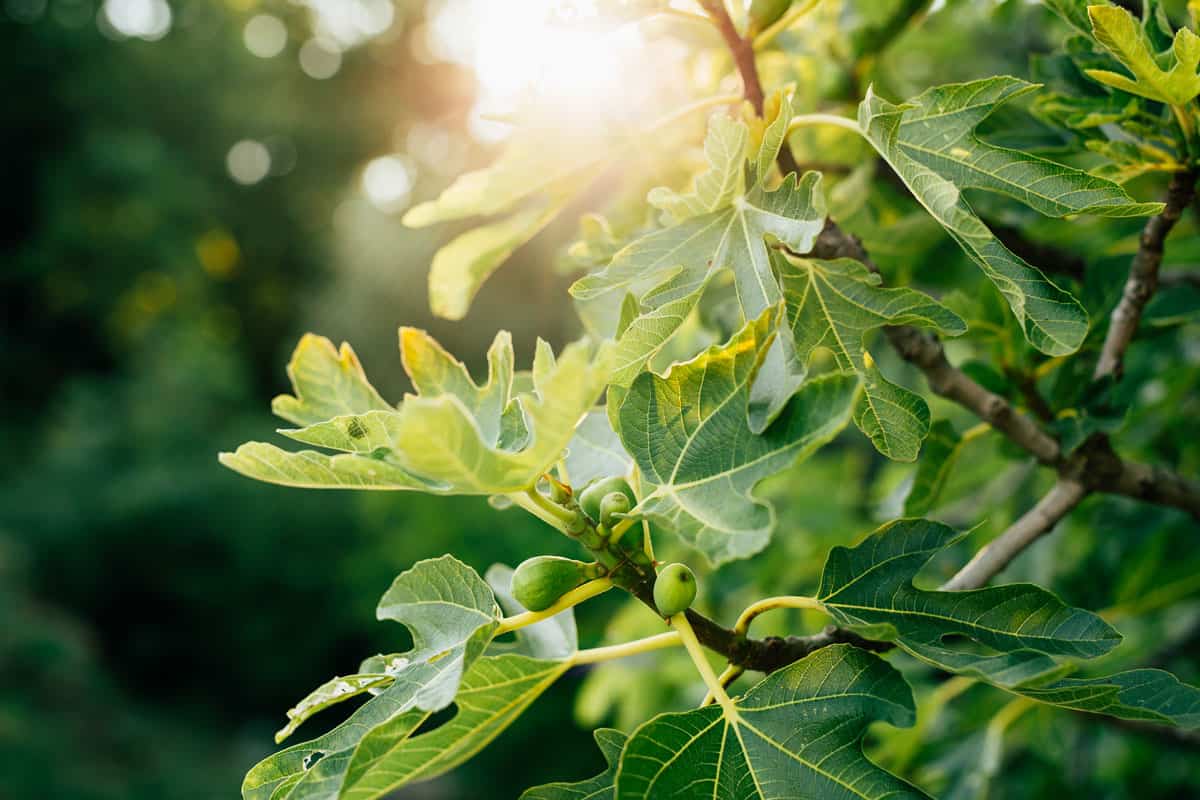
Fig trees are sensitive in nature. They must be provided with constant care and maintenance to keep the plant healthy and thriving. We hope the article helped you identify the reasons that cause unexpected leaf fall. Happy gardening!
You might also find these topics informative:


